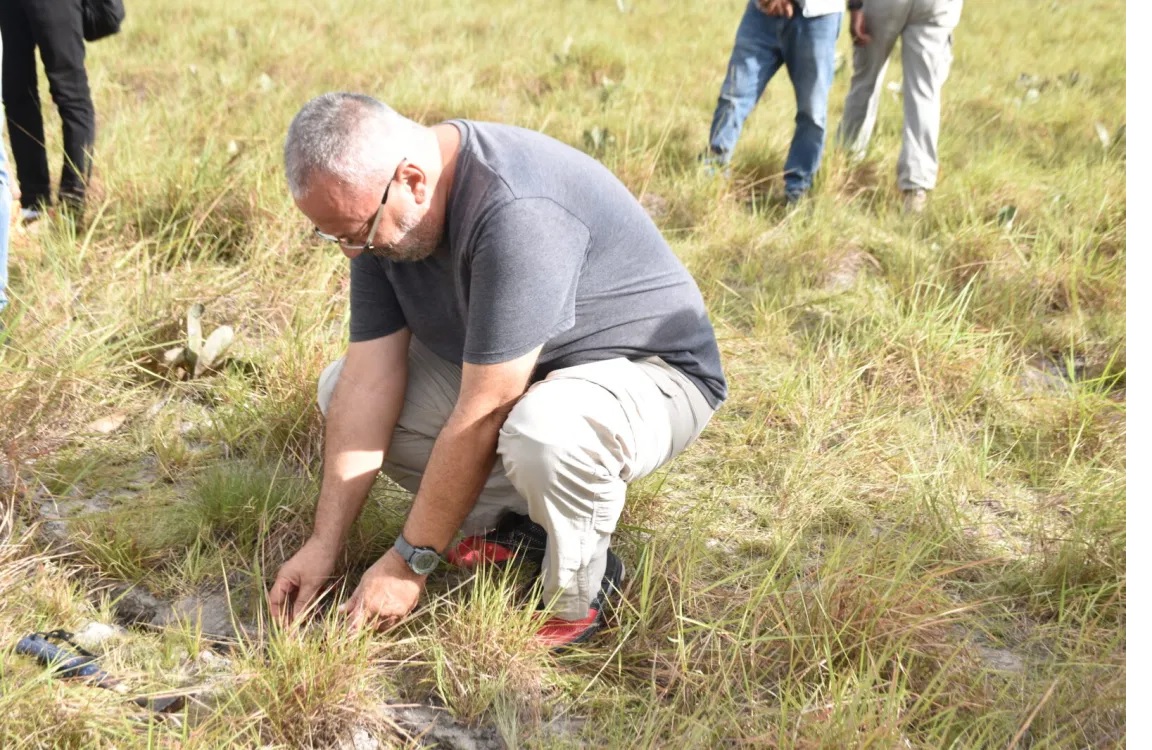Minister of Home Affairs, Robeson Benn has told residents of the South Rupununi unnerved by a strong quake two Sundays ago that there is no need to relocate as such seismic activity is rare in that region.
The estimated 5.6 quake on January 31st, accompanied by aftershocks, damaged some buildings and left residents on edge.
The Department of Public Information (DPI) said that Benn on Saturday visited the villages of Katoonarib and Sawariwau, Deep South Rupununi, where there was structural damage and cracks in the earth’s surface.
Benn, a geologist by profession, was accompanied by fellow geologist Leandro Pires, Director-General of the Civil Defence Commission, Lieutenant Colonel Kester Craig, and a CDC team, DPI said.
During a community meeting in Katoonarib on Saturday, DPI said that Benn noted that earthquakes in that area were rare and persons should not migrate.
“This is not necessary, and it will only cause enormous distress, dislocation and unnecessary expenditure of money. There is no need to leave your homesteads to go to any other place.”
Benn also dispelled suggestions that the quake was caused by the oil extraction activities in Guyana’s maritime space.
“That is completely impossible. If that were the case, we would have lost the seawalls, the city of Georgetown and everything would have been in the ocean already. Not to happen all the way out here, some 700 miles in the Rupununi. It is totally unrelated, and I want to dispel those suggestions that it is related to oil extraction out on the coast or in the ocean.
“We have taken out much more volumes of pure water for drinking than we have for oil for those sediments going out there. So, those things are totally untenable in relation to these events”, DPI reported him as saying.
Benn said that a technical report on the earthquake’s effects would be completed and shared with the Government and the affected communities.
Head Teacher of Sawariwau Primary, Lennox Henry complained that vibrations and loud rumblings were being felt and heard continuously.
Pires noted that the rumbling sounds are normal following a quake and should not be a cause of concern. He added that a release of energy causes the noise through the cracks in the earth.
“It (is) supposed to happen for another couple of weeks, and then after that, it should finish. It is a very rare event for an earthquake to happen inside a stable plate like where the whole of South America is located, except for the Andes Mountains,” the geologist said.
Benn assured the residents that there would be seismic and audio monitoring and other assessments of the area.
CDC head Lt. Col. Craig reported that there was minor damage as a result of the quake. Two houses in Katoonarib suffered some damage, while there were several cracks in houses and Government facilities in Sawariwau.
One resident of Katoonarib whose wall collapsed, Grace Cyril, said that the incident occurred while she was out of the area. She expressed appreciation for the assistance provided by the Regional Democratic Council to repair her home.
“I have already received 16 zinc sheets, 10 sacks of cement and wooden materials.”
During an inspection in Katoonarib, DPI said that the team observed visible cracks in the earth and three areas of sizable depressions.
Over the next three days, a small team from the CDC will conduct continuous assessments in the affected communities.






